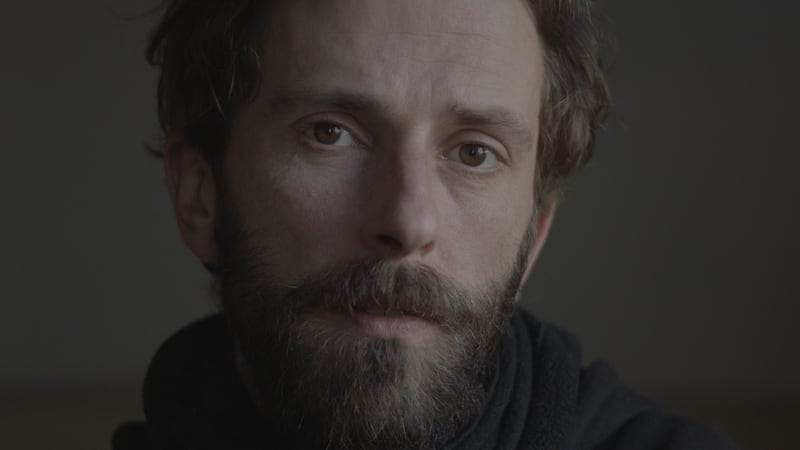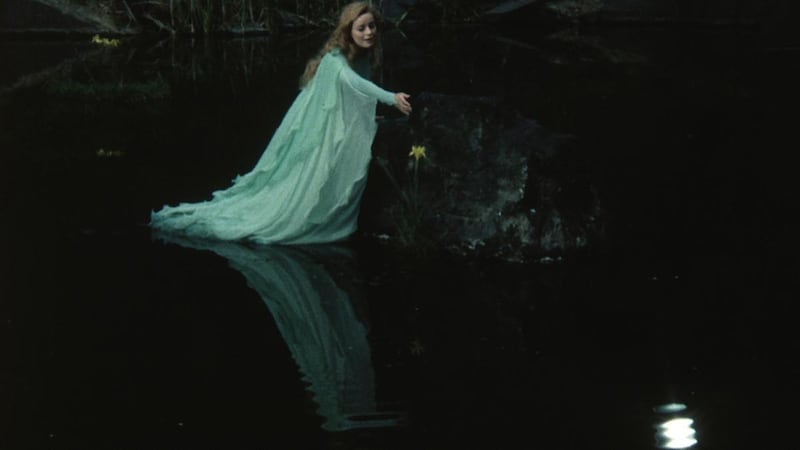When producer Clare Stronge first sat down with film-maker Tadhg O’Sullivan to discuss his exquisite new work, To the Moon, it seemed like perfect timing. Stronge, having just enjoyed an award-winning run with Emer Reynolds’s Voyager probe documentary, The Farthest, had made invaluable contacts in Nasa during her investigation of the two robotic interstellar probes and the Golden Record.
These contributors, however, were not at all what Tadhg O’Sullivan had in mind. If anything, the director’s new, poetic mediation on everyone’s favourite satellite, characterises the scientific exploration of the orb as a near-imperialist venture. To the Moon makes for a fascinating voyage, albeit one of the figurative rather than literal variety.
“You could argue that it’s the most literal gesture humankind has ever undertaken, to actually go to the moon and turn on the lights and demystify it,” says O’Sullivan. “You have this timeless symbol of femininity, and especially to have six white Americans go plant a flag – it is a kind of imperialist gesture. From my own kind of reading and thinking, there is a line from Columbus and other colonisers through to the moon landings, via people like Jules Verne, and adventuring Victorians who first suggested voyaging to the moon, and how that fed into the collective imagination, particularly in Germany in the early 20th century, which, in turn, led to Werner von Braun and the science underpinning Nasa. It’s something that I thought about when I was writing the film. I wanted to look at all the things that have been a little bit lost about the moon. All the folklore and the imagination that has been obscured by the scientific exploration.”

The scope of O’Sullivan’s lunar mediation cannot be overstated. Having reached out to archives all around the world, To the Moon incorporates footage from dozens of countries and sources, including film from Mosfilm Cinema Concern, the National Film Archive of India, the National Archives of Latvia, the Film Archives of Estonia, the George Eastman Museum, the National Film Board of Canada, and even the Disney vaults.
Having avoided a “prescriptive” set of instructions for his international collaborators, O’Sullivan’s film features all kinds of representations of the moon and of moonlight. Lesser-known images and sequences from Ukraine, Hungary and Italy are deftly cut between work from Alice Guy-Blaché, Fritz Lang, Charlie Chaplin, FW Murnau and Satyajit Ray. Newly commissioned 16mm moonlight footage from around the globe is seamlessly edited into a 4:3 aspect ratio format, adding to the film’s spell.
Rich tapestry
“I’m somebody who’s worked in very, very small teams prior to this,” says O’Sullivan. “So I wasn’t really that used to working with large groups or diverse groups of people. And what I found worked best was if I kept it quite abstract. If you’re quite literal and you’re just saying; I want images of the moon, there were cases where people sent back five shots of the moon from their phones. And that’s great, but not really what I’m looking for. But there were people that I sat down with, either on the phone or over emails, and just talked about the moon. People who said: I love this poem, I love this song, I love this film. That was the spirit of the film. I had a PDF, which kind of explained a lot of the themes and ideas, with sample images and small excerpts of poetry, And when people had the patience to go through that, what they would come back with would be quite surprising to me. Because you don’t know what you’re going to find in the Estonian archives.”
The results are a rich tapestry. The images are accompanied by a new score by Amanda Feery and Linda Buckley, plus fragments of lunar-themed opera and classical music from Wagner, Debussy and Dvorák. Various literary sources, ranging from Shakespeare to Plutarch to Samuel Beckett, are narrated by Olwen Fouéré and others. And then there’s moon mythology.

“There were a series of rabbit holes,” says O’Sullivan. “Sitting down with an iPad, by the fire, everything is possible at the start of a project, and you’re disappearing down long avenues of, I don’t know, Inca folklore and Moon Palaces. It’s very difficult to explore something that you really have no great handle on – like South American Native folklore. It’s also got no cinematic presence, really. And so your only way into it would be to use excerpts of poetry or dialogue or something like that.
“There’s lots of interesting stuff. I was really keen to represent a wide diversity of cultures. And I was in a bookshop at one point in Amsterdam, and a lovely book jumped out at me, which was a compendium of Native American poetry, which I went flicking through. And there was a poem by Jennifer Foerster, Blood Moon Triptych, which I then absolutely fell in love with. I used it to open the film and to close the film. And she was very generous in allowing me to use that.”
Essay film
O’Sullivan, one of Ireland’s most talented hyphenates, grew up in rural Carlow, where he says, film and literature was his window to the world. He was at university before he thought to pursue a career as a film-maker, editor, sound designer and sound recordist. His work has subsequently screened at festivals all over the world and he is currently the University College Cork film artist in residence. As an editor he has worked on two of the best Irish films of the past decade, Song of Granite and The Lonely Battle of Thomas Reid.
As a director, he has co-authored Yximalloo, a 2014 documentary portrait of a cult Japanese musician who has spent most of his 57 years struggling to fit in with the music scene and society.
To the Moon, his third solo feature makes for an interesting counterpoint to O’Sullivan’s The Great Wall, his poetic 2016 consideration of European borders and the “political architecture of power” set to a reading of Kafka’s At the Building of the Great Wall of China.
Both films locate O’Sullivan’s work within the tradition of the essay film, a voguish subgenre that is elastic enough to cover Dziga Vertov’s seminal Man with a Movie Camera (1929), Leni Riefenstahl’s chilling Triumph of the Will (1935), the Auden-authored, Britten-scored Night Mail (1936), Chris Marker’s milieu, and the lively, oft-quoted Pervert’s Guide to Ideology (2012), starring Slavoj Zizek.
“I don’t see myself necessarily as a storyteller,” says O’Sullivan. “There’s nothing wrong with stories, per se. I read them. I watch them. But I’m really drawn at the moment and over the last number of years to the essay. Within literature, it’s kind of having a bit of a moment again, and I think the essay is a perfect framework for the kind of curiosity that I love. Because somebody can just go on a journey of figuring something out. It can seem incoherent and can wander from place to place, but it’s all within a particular drive of curiosity. I think the way that we work through culture these days, when there’s so much stuff, when we move from association with one thing that we discover to another thing that comes at us, we’re constantly looking for patterns that connect and make sense of our journey through all the stuff that’s around us.”
The personal essay continues to inform O’Sullivan’s latest venture, an experimental foray into fiction film featuring Brenda Fricker. It sounds, like all of his oeuvre to date, unmissable.
“It started off as an essay about lost and destroyed art, and being kind of fascinated by why we seek to preserve things and the politics of preservation. You can then consider things like the toppling of statues and stolen Van Goghs and the history of the city of Venice. And when I thought about these things, I wondered: what if I framed that essay as the thought process of a fictional character, and then filmed that fictional character living their life? Fast-forward two years later, and we’re in north Clare in a house that’s surrounded by a tide with Brenda Fricker. That’s what the film has become. And it’s kind of exciting. It’s new.”
To the Moon opens November 26th


















